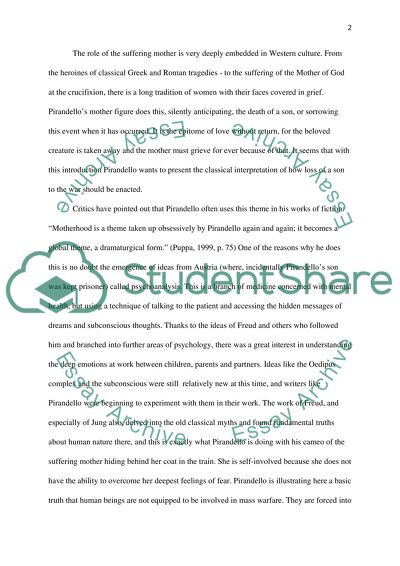Cite this document
(“War (1919) by Luigi Pirandello Research Paper Example | Topics and Well Written Essays - 1500 words”, n.d.)
Retrieved de https://studentshare.org/english/1585494-war-1919-by-luigi-pirandello
Retrieved de https://studentshare.org/english/1585494-war-1919-by-luigi-pirandello
(War (1919) by Luigi Pirandello Research Paper Example | Topics and Well Written Essays - 1500 Words)
https://studentshare.org/english/1585494-war-1919-by-luigi-pirandello.
https://studentshare.org/english/1585494-war-1919-by-luigi-pirandello.
“War (1919) by Luigi Pirandello Research Paper Example | Topics and Well Written Essays - 1500 Words”, n.d. https://studentshare.org/english/1585494-war-1919-by-luigi-pirandello.


